Blue metal aggregate, also known as crushed rock aggregate, is a common construction material in Australia. It consists of crushed stone and gravel made from igneous, metamorphic, or sedimentary rock.
Blue metal aggregate takes its name from the blue-grey color of the crushed basalt rock, which is abundant in parts of Australia. However, other types of stone are also used to make blue metal aggregate, including granite, limestone, trap rock, and quartzite.
The stone is crushed into various sizes suitable for different purposes. Fine blue metal aggregate is used as sand in concrete, while larger graded aggregate is used as base material for roads, driveways, and pavements.
Blue metal is commercially sold in a variety of sizes including 5mm Blue Metal, 10-14mm Blue Metal, 20mm Blue Metal and 40mm Blue Metal.
Blue metal aggregate is derived from igneous and metamorphic rocks that have been weathered, eroded and deposited by geological processes in Australia. The key source rocks for blue metal aggregate are:
• Basalt: Formed by cooling lava flows, basalt is a common igneous rock in Australia. It solidified quickly underground or on the surface, trapping gas bubbles that create its porous structure. Basalt weathers into durable blue metal aggregate.
• Granite: An intrusive igneous rock formed deep underground, granite slowly cooled and crystallized into its characteristic interlocking texture. Weathering of granite produces angular blue metal aggregate particles.
• Quartzite: A metamorphic rock formed from quartz sandstone. The intense heat and pressure of metamorphism fused the quartz grains into a very hard and durable rock. Quartzite weathers into angular, high-strength blue metal aggregate.
• Gneiss: A foliated metamorphic rock that often forms in thin layers. Gneiss weathers to form durable, platy blue metal aggregate particles with a layered structure.
Over millions of years, these source rocks have been broken down by weathering processes like freeze-thaw cycling, chemical dissolution and plant root growth. Running water has further eroded and transported the resulting rock fragments, depositing and sorting them into different sizes. The rocks are then crushed into their various sizes ready for commercial sale. The most durable fragments have survived to become blue metal aggregate used in construction today.
The larger sizes of blue metal aggregate like 20mm and 40mm are mainly used for base course and sub-base layers in road construction. They provide drainage, load distribution and a stable base for upper layers.
Sizes from 10mm to 14mm blue metal aggregate are used as general purpose aggregates for applications like drainage, concrete, asphalt and pipe bedding. They are suitable for the mixture matrix due to their intermediate size.
Finer aggregates like 5mm blue metal aggregate and Blue Metal Dust are often used in concrete, mortar and grouts. The dust can be used as a base layer for drainage under paths and even top dressing. In concrete, the smaller aggregates help fill the voids between the larger aggregates, creating a dense mixture that binds well.
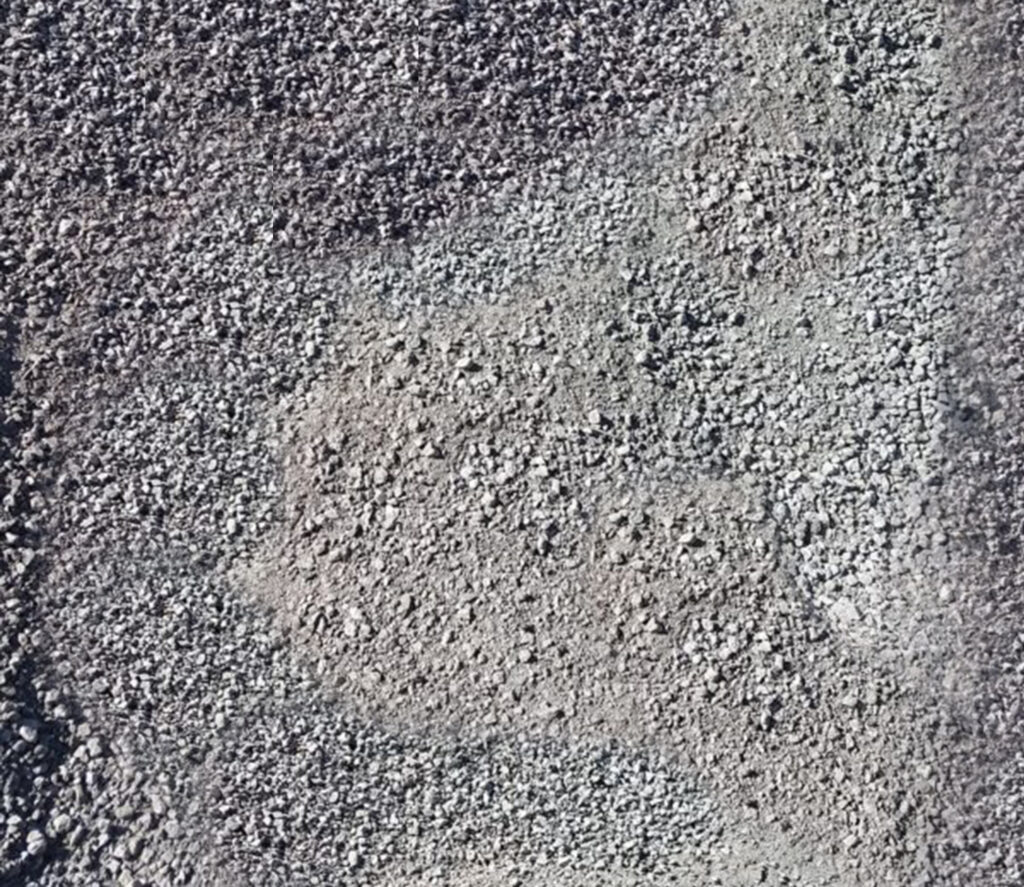
Blue metal dust, also known as quarry dust, cracker dust or crusher dust is a low-cost byproduct of crushing processes at quarries and is one of the most widely used materials in landscaping and construction. Left-over rocks are used to crush into Crusher Dust. It consists of finely crushed basalt which are broken down to a particle size of around 5mm minus. This fine powder has several useful applications:
Concrete production: Blue metal dust is often used as a replacement for part of the sand in concrete mixes. It can constitute up to 30-40% of the sand content.
Paving, pathways, walkways: Blue metal dust can also be utilized as a base layer beneath patios, driveways, and other hardscaped areas. As a paving sand, it provides a stable, compactable layer that is suitable for foot and vehicle traffic.
Base Layer below Artificial grass: Blue metal dust can function as an effective base layer underneath artificial grass installations.
Fill material: The dust is sometimes utilized as a low-cost fill material beneath pavements, roads, building foundations and retaining walls.
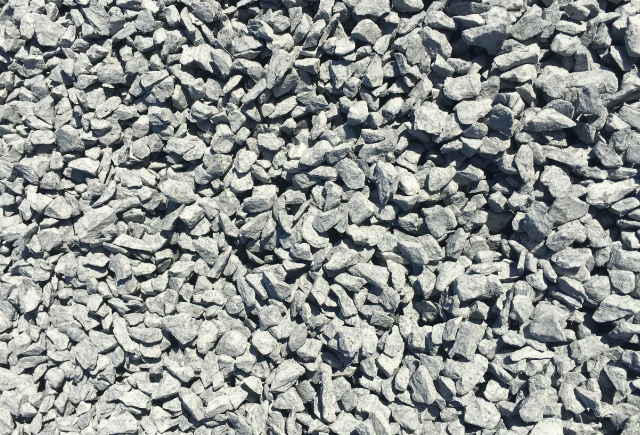
Finer blue metal aggregate like the 5mm size is widely used in the production of concrete, plumbers use it as a drainage aggregate, whilst landscapers use it as a decorative gravel. It helps fill the gaps between larger aggregate sizes, creating a dense and well-bound concrete mixture. Some specific uses of 5mm blue metal aggregate include:
Concrete paving: 5mm blue metal is useful for making concrete slabs and pavements. The fine particles fill in the gaps to produce a smooth, hardwearing surface.
Concrete blocks: Sand is combined with 5mm blue metal aggregate to create a sand and aggregate mix (also called corefill) which is used to fill the holes in blocks to give it strength and stability.
Concrete mixes: Many pre-mixed concrete products for do-it-yourself use contain 5mm blue metal aggregate. The fine aggregate helps achieve the right consistency and workability.
Decorative Gravel: Often landscapers find 5mm aggregate very versatile and will use it as a decorative aggregate as a cheaper option that other decorative pebbles
Drainage: Used as a drainage aggregate around pipes and trenches

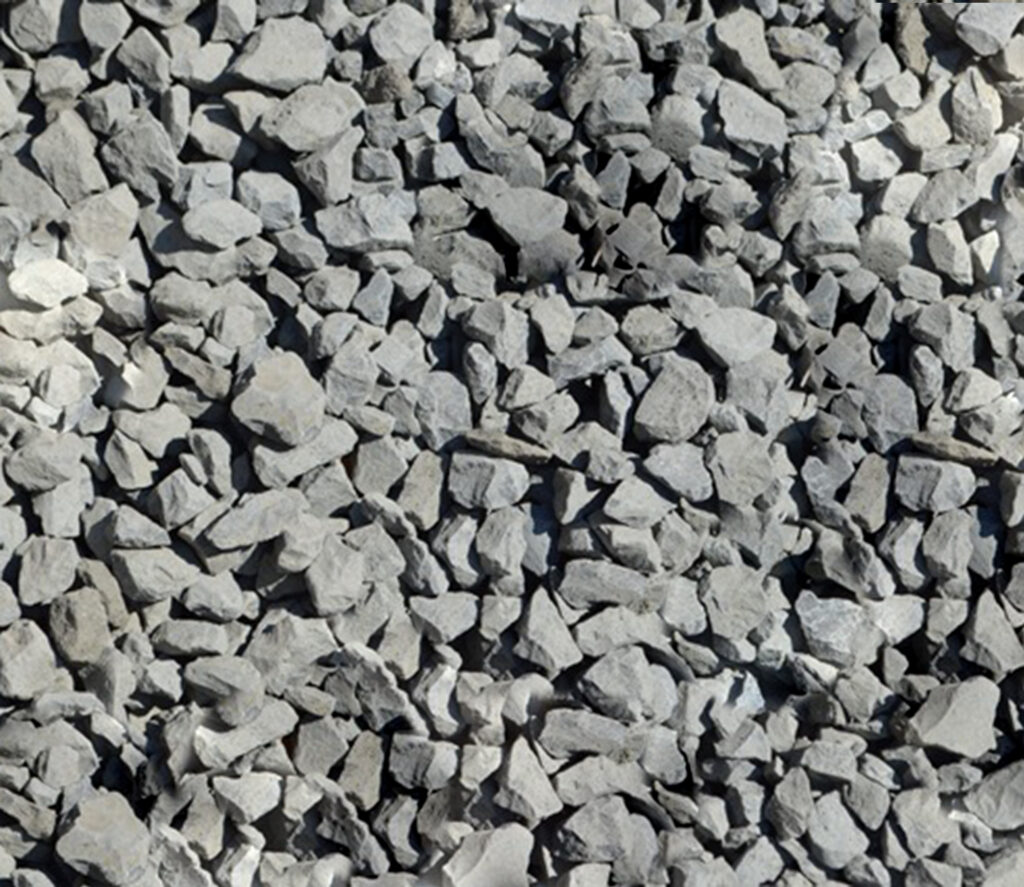
10mm blue metal aggregate is a versatile size that can be used for a variety of construction applications. Some common uses of 10mm blue metal aggregate include:
As drainage material around retaining walls and under buildings. The spaces between the small aggregate particles allow for water to drain through.
As a base layer for driveways and carparks. The 10mm blue metal aggregate forms a stable and compact base.
For filling and leveling of areas prior to laying pavers and concrete. The aggregate can be leveled and compacted to provide an even surface.
As backfill behind retaining walls to provide drainage and structural support.
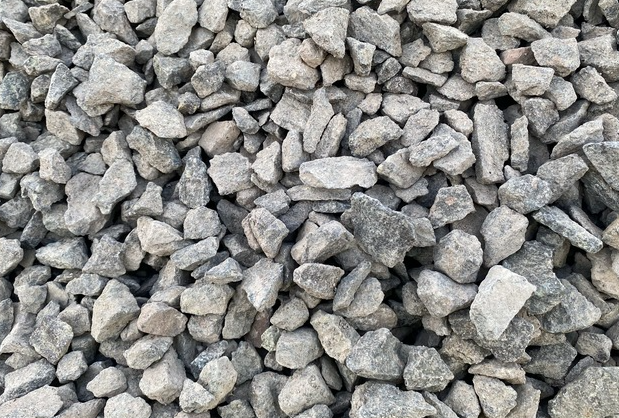
14mm blue metal aggregate is commonly used in road construction and paving applications due to its larger size. Some key uses of 14mm blue metal include:
• Road bases: Providing a stable base for the road surface, 14mm aggregate is often used as a road base material beneath asphalt or concrete pavements. It helps distribute loads from the pavement to the soil subgrade.
• Sub-bases: Similar to its use as a road base, 14mm aggregate functions well as a sub-base material beneath the road base layer. It allows for drainage and load distribution while creating a uniform foundation.
• Driveways and car parks: When laid and compacted, 14mm blue metal aggregate can form the base for asphalt or concrete driveways and parking lots. It helps the upper layers resist rutting and deformation from vehicle traffic.
• Paths and walkways: Larger aggregate sizes like 14mm are often the preferred option for aggregate-based paths and walkways. The larger particles provide a durable surface that is stable under foot traffic.

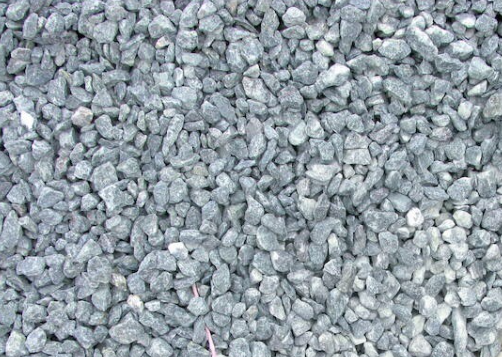
20mm blue metal aggregate is commonly used for a variety of drainage and foundation applications due to its large particle size. Its most common use is in drainage. Some common uses of 20mm blue metal include:
• Drainage layers: As the largest standard aggregate size, 20mm blue metal provides excellent drainage beneath structures. It is often used beneath slabs, retaining walls, building foundations and other structures to allow water to flow away rapidly.
• Filter layers: A 20mm aggregate layer can function as a filter layer to prevent fine particles from migrating into drains or drainage pipes. The large void spaces allow water to flow through while retaining fine soil particles.
• Pipe bedding and haunches: 20mm aggregate is suitable for bedding and surrounding drainage pipes. It provides support while also allowing water to drain away from the pipe.
• Hardstands: Large aggregate sizes like 20mm blue metal can form the base for hardstand areas. Due to its large void ratio, it is well-suited to areas requiring rapid drainage of surface water.
• Sub-bases: As with 14mm aggregate, a 20mm blue metal sub-base layer provides a stable foundation and drainage pathway beneath a road base or slab. The larger particle size allows for more rapid water flow.
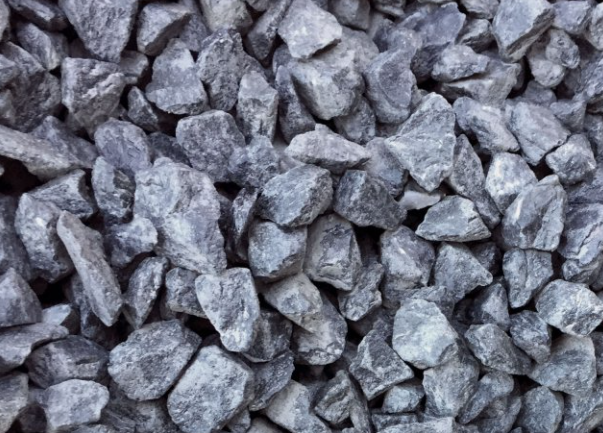
40mm blue metal aggregate is one of the largest standard aggregate sizes available. It is mainly used for drainage and load-bearing applications where rapid water flow away from a structure is important or heavy loads bearing is required. Some common uses of 40mm blue metal include:
• Road bases: 40mm aggregate forms the lower layer of a road base, providing drainage and a stable foundation for the overlying wearing course. The large void spaces allow water from the pavement to drain away.
• Hardstand bases: Similar to its use in road bases, 40mm blue metal aggregate provides a durable and well-drained base for vehicle hardstand areas.
• Filter layers: As one of the largest aggregate sizes available, 40mm blue metal can function as a highly effective filter layer to trap fine soil particles while allowing water to drain. It is often used below large concrete slabs or structures.
• Capping layers: A thick layer of 40mm aggregate can form an impermeable cap to retain water or contaminants below. The large void spaces prevent fines from migrating upwards.
• French drains: Perforated pipes surrounded by 40mm aggregate form effective French drains to drain water away from structures. The large aggregate size allows rapid water flow into the drain.

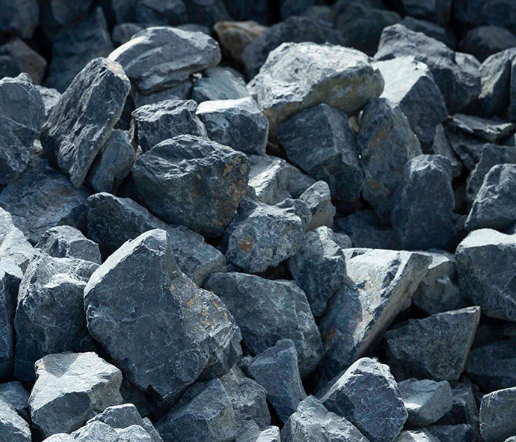
Gabion rock blue metal, also known simply as blue metal, is a type of gabion rock that uses crushed basalt or other igneous rock as stabilization material. It is the largest of the rocks at between 75-150mm. Gabion Rock has several useful applications in construction and engineering projects:
Slope Stabilization: Gabion baskets filled with blue metal create a retaiannig wall that are effective at stabilizing earthen slopes and preventing erosion. The permeability of the rock fill allows water to drain through while the cage structure holds the slope in place.
Retaining Walls: Blue metal gabion walls can be used to retain sloping ground, support embankments and stabilize hillsides. They provide a cost-effective and aesthetically pleasing alternative to traditional retaining wall structures.
Channel Lining: Gabion rock-lined channels are used to stabilize drainage ditches, streams and canals. The rough surface of blue metal gabion lining helps dissipate energy from flowing water while also preventing scour and erosion of the channel bed and banks.
Foundation Support: Blue metal gabion boxes filled with crushed rock can provide foundation support and load transfer for structures built on soft or unstable soil.
The process of getting blue metal delivered to your project site involves careful consideration of various factors, including your delivery preferences and requirements.
RUBBL is your go-to blue metal delivery partner. With three effective delivery options to suit all your landscaping needs, vehicle tracking, paperless invoicing, ordering, and receiving blue metal is a breeze!
There are other considerations to consider when ordering blue metal, and RUBBL has them all covered. Factors such as site access, timing, and site preparation should be taken into account to prevent delays and complications. With the RUBBL App, you can specify all this information with ease, making your delivery incredibly simple and hassle-free.
No, blue metal aggregate is not always made from basalt in Australia. While basalt is a common source of blue metal aggregate, especially in parts of Victoria and New South Wales, other types of rock can also be used. As mentioned earlier, blue metal aggregate can be produced from igneous rock like granite, as well as metamorphic and sedimentary rocks like limestone, quartzite, and sandstone.
The specific type of stone used to produce blue metal aggregate in a particular region depends on the availability of rock resources in that area. For example, in Western Australia there are large deposits of granite, so granite is commonly used as a source of blue metal aggregate. Limestone is another common source in some areas.
The color of blue metal aggregate can vary significantly depending on the type of rock. While basalt produces the distinctive blue-grey aggregate that gives blue metal its name, aggregates from other rocks can range from light grey to reddish-brown. The important properties for blue metal aggregate are that the rock is hard-wearing, durable and able to crush down into the required particle sizes.
20mm blue metal aggregate is made through a process of rock quarrying and crushing. First, basalt or other igneous rock is extracted from a quarry. The raw quarry rock varies in size from boulders to smaller fragments.
The quarry rock is then fed into a primary crusher which breaks it down into smaller pieces. Primary crushers can be jaw crushers, roll crushers or gyratory crushers.
The partially crushed rock is screened to separate out finer material. The rock that is around 20mm in size is separated out and transported to a stockpile for further processing.
The 20mm rock is then fed into a secondary cone crusher which further reduces the particle size and shapes the aggregate particles. The crushed 20mm blue metal aggregate is screened again to ensure consistent particle size and remove any fines.
The final 20mm blue metal aggregate product is then stockpiled ready for transport and use in construction and landscaping projects. The entire crushing process is designed to produce aggregate particles with an angular shape, interlocking texture and uniform size range suitable for the intended application.
Blue metal aggregate has several advantages compared to other types of aggregates. Some of the main reasons why blue metal aggregate may be considered better than alternatives are:
Durability: Blue metal aggregate is produced from igneous rock sources like basalt. These rocks have a high resistance to weathering and chemical breakdown. This makes blue metal aggregate very durable and long-lasting, even under demanding conditions. Other aggregates derived from sedimentary rocks tend to be less durable.
Shape: The crushing and shaping process produces blue metal aggregate particles with interlocking angular shapes. This angularity promotes a tighter packing and interlocking of particles, resulting in better strength and stability in construction applications compared to rounded aggregates.
Porous structure: The pores and cavities within blue metal aggregate particles help drain excess water and allow for interlocking of binders like cement. This improves the performance of concrete, asphalt and other materials that use the aggregate.
However, blue metal aggregate also has some potential disadvantages. It can be more expensive than some alternatives due to the quarrying and processing required. The colour can also limit its use in some applications where aesthetics are important.
The larger sizes of blue metal aggregate like 20mm and 40mm are mainly used for base course and sub-base layers in road construction. They provide drainage, load distribution and a stable base for upper layers.
Sizes from 10mm to 14mm blue metal aggregate are used as general purpose aggregates for applications like concrete, asphalt and pipe bedding. They are suitable for the mixture matrix due to their intermediate size.
Finer aggregates like 5mm blue metal aggregate are often used in concrete, mortar and grouts. They help fill the voids between the larger aggregates, creating a dense mixture that binds well.
Blue metal aggregate offers several advantages, including durability, strength, stability when compacted, resistance to weathering, and cost effectiveness due to the abundance of stone resources in parts of Australia.
RUBBL enables the ordering of your bulk materials to be efficient & effortless by digitizing the entire process. The App connects Building Contractors, Suppliers and Transporters to create a reliable and rapid way to receive your sand, stone, gravel and mulch.
Servicing the Greater Newcastle Region